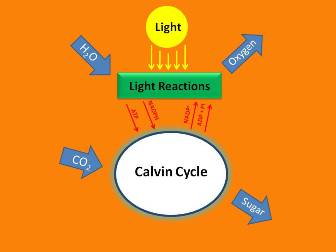Nutrition
The Pacific Yew is known as a photoautotroph. This means that
it’s able to make its own food through a process called
photosynthesis. In general, this is when the chloroplasts
located inside the plant cells capture light from the sun and
convert it into chemical energy that can be used by the plant.

When taking a closer look, we see that the first step in
photosynthesis is the light reactions which are located in the
leaves. During the light reactions, the chlorophyll pigments in
the thylakoid membrane absorb and collect the light. The energy
from
the light is then bounced around in the membrane until it reachs the energy center. This energy is then used to make ATP
and NADPH which are both forms of energy that can be used by the
plant to make its food. The process of photosynthesis is
dependent on
water because water provides the electrons that keep the process
going. This much-needed water is transported throughout the tree
in the xylem.
 Now that we’ve made ATP and NADPH, we need to make the sugar.
This step occurs during the Calvin Cycle. Basically the Calvin
Cycle involves three steps: fixation, reduction, and regeneration.
All three of these steps occur in the stroma, or fluid, inside the chloroplasts
of the cells. Through these three parts, a molecule called
Ribulose biphosphate is converted into a sugar called
Glyceraldehyde-3-phosphate with the help of the ATP and NADPH
molecules created earlier in the light reactions. In order for
one molecule of glucose (sugar) to be made, this cycle has to go
through twice. Once the sugars are created, they get transported
throughout the tree in the phloem .
Now that we’ve made ATP and NADPH, we need to make the sugar.
This step occurs during the Calvin Cycle. Basically the Calvin
Cycle involves three steps: fixation, reduction, and regeneration.
All three of these steps occur in the stroma, or fluid, inside the chloroplasts
of the cells. Through these three parts, a molecule called
Ribulose biphosphate is converted into a sugar called
Glyceraldehyde-3-phosphate with the help of the ATP and NADPH
molecules created earlier in the light reactions. In order for
one molecule of glucose (sugar) to be made, this cycle has to go
through twice. Once the sugars are created, they get transported
throughout the tree in the phloem .
Now that you've seen how the Pacific Yew is able to get energy to survive, take a look at the Reproduction page to see how it's able to reproduce and spread.